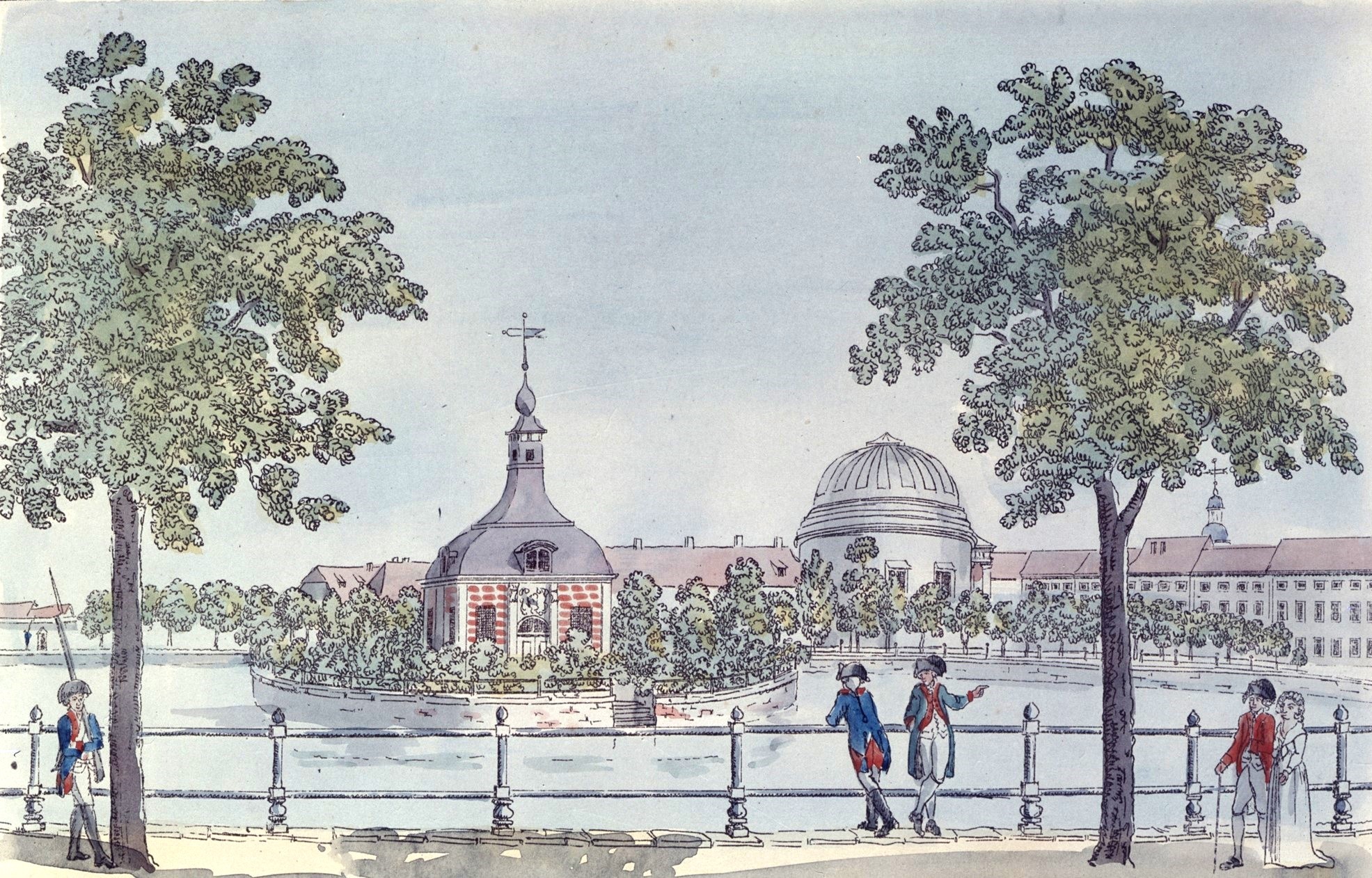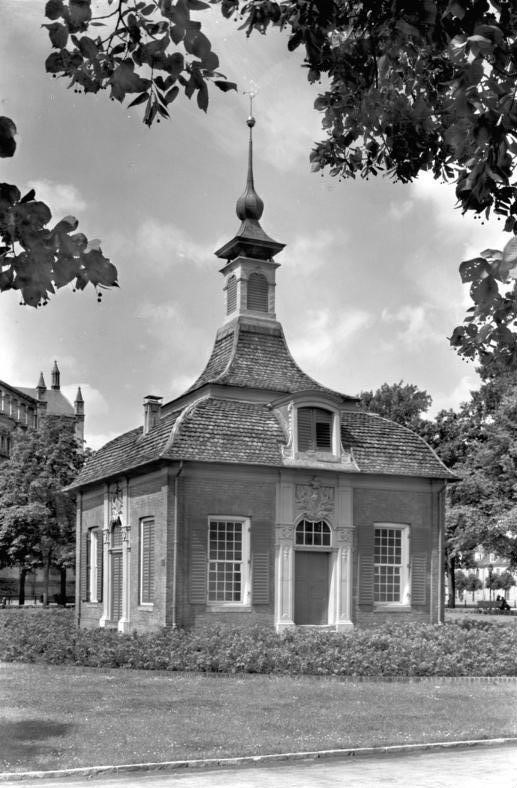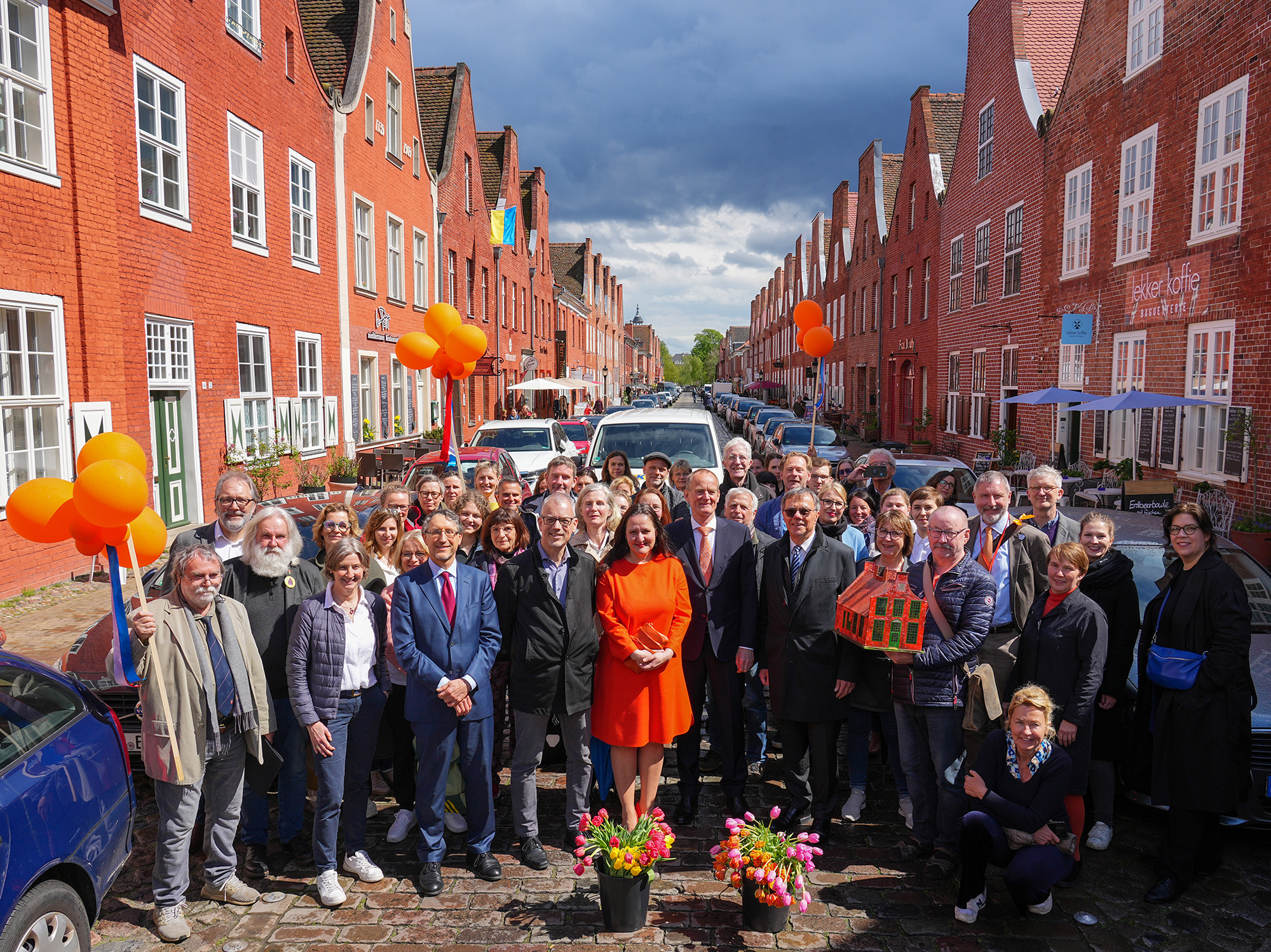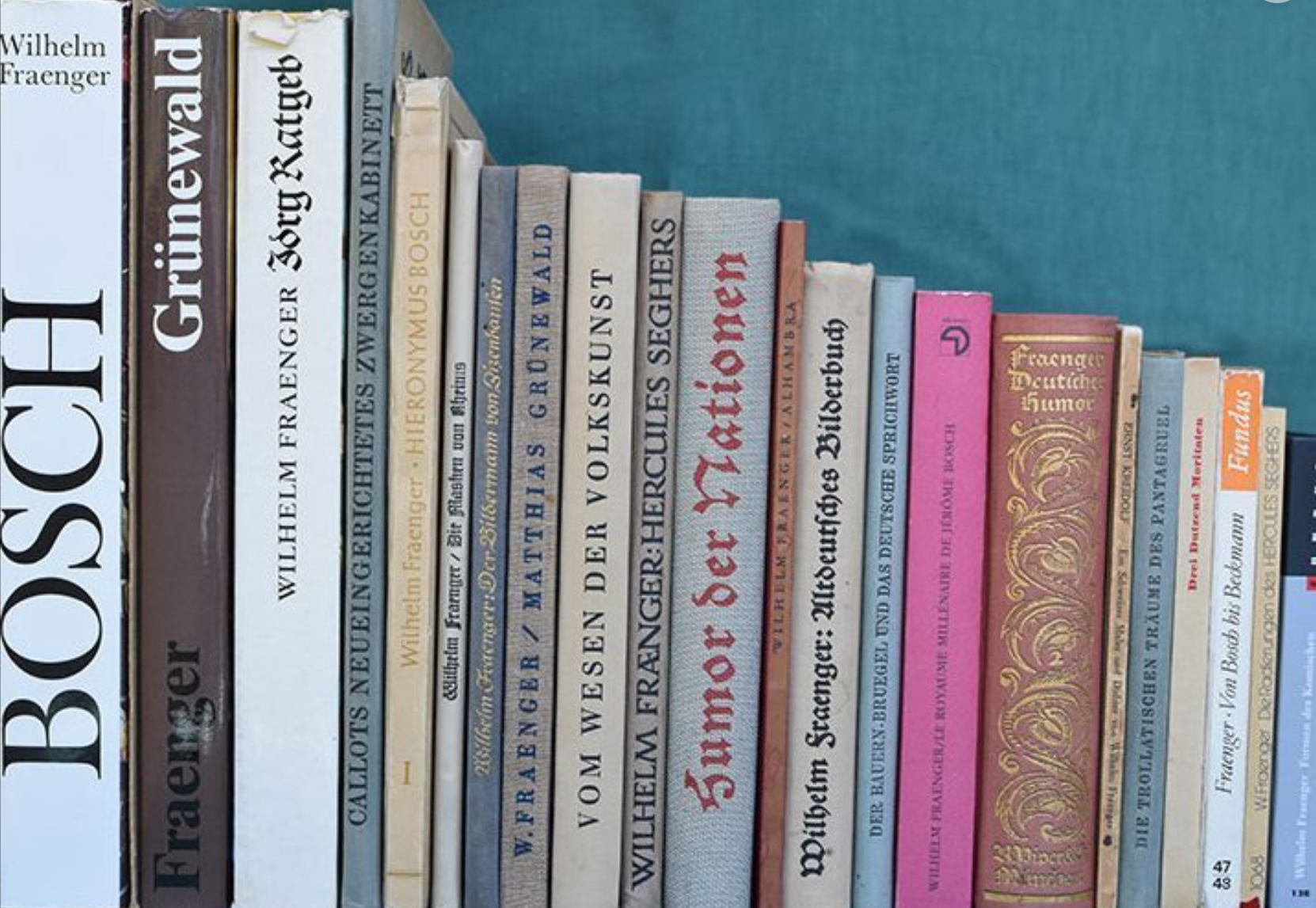
A Tobacco Hut at the Bassinplatz
Bassinplatz, or “Basin Square,” was once a swampy area whose edges were drained in the 1730s. large Dutch-style basin with Baroque decoration was installed in the middle of the terrain.

The basin served to drain the swamp in order to create the building site for the Dutch Quarter. The water flowed from the Havel River along the Hasengraben canal and through the Heiliger See, and from there through the Alter Kanal into the basin. It drained into the city canal underground on the east side of the present-day Platz der Einheit and from there returned to the Havel. The connection to the river also enabled the basin to be used as a city harbor.
In the middle of the basin was an island. There, the Dutch architect Jan Bouman erected a small pavilion known as the Gloriette in the line of sight of the streets Brandenburger Straße and Benkertstraße. This royal pleasure pavilion in the Dutch style was built in 1739 at the behest of Frederick William I. The Gloriette was a central element of the second Baroque expansion of the city, since it lay at the intersection of the two new visual axes. Before the construction of the church on the Bassinplatz in the nineteenth century, the Gloriette could be seen from the Brandenburg Gate. Only two festivals took place in the pavilion: its dedication in 1739, and the memorial ceremony on the first anniversary of the Battle of Hohenfriedberg in 1746. Colloquially, it was also known as the “tobacco hut,” since it served as a meeting place for the so-called “tobacco college” of Frederick I, the Soldier King.
With its basin surrounded by linden trees, the square was popular for strolling. According to school director Samuel Gerlach, the inhabitants of Potsdam also fished there and ice skated in winter. His idyllic description, however, contrasts with the residents’ complaints about the noxious smell of the water, which became stagnant due to the inadequate slope of the terrain.
Three extensive repairs in the eighteenth century did nothing to change this fundamental problem. While the Hohenzollern monarchs wanted to preserve the basin, the residents demanded that it be filled in. In the 1820s, garden director Peter Joseph Lenné devised a plan to reduce the size of the pool. The work began with the creation of a parade ground to the west, a site that is now occupied by the Catholic church of St. Peter and Paul. The church was dedicated in 1870 and still dominates the square to this day. Six years later, the basin was filled in once and for all. The Gloriette remained and was used as an exhibition space for the City Museum in the 1930s. After World War II, the Gloriette was demolished and a Soviet cemetery of honor took its place.
– Susanne Marok, Jan Bouman Haus




